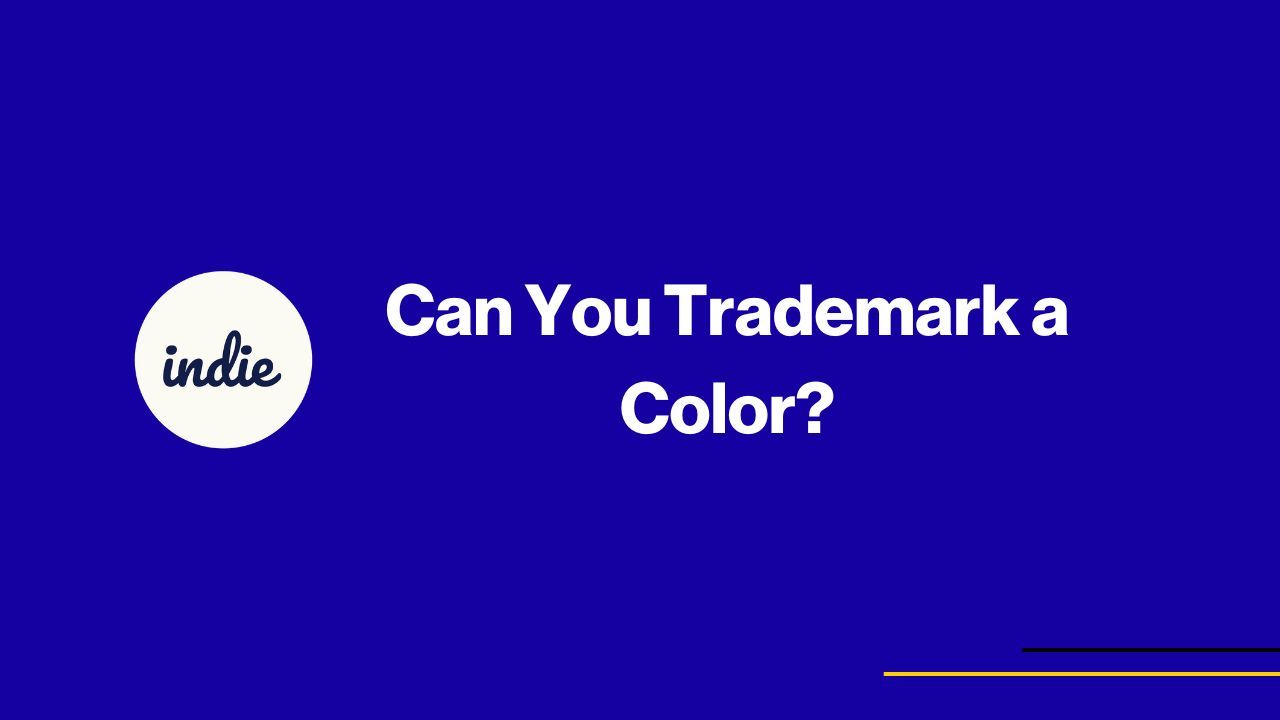Colors are a powerful part of branding, with some becoming instantly recognizable symbols of specific companies. Iconic examples like Tiffany Blue® or the red soles of Christian Louboutin shoes show how a color can evoke strong brand associations. But can a business legally trademark a color?
The short answer is yes, but the process is complex and requires meeting specific legal criteria. This guide will break down everything you need to know about color trademarks, including famous examples, the application process, and potential challenges.
- Can You Trademark a Color?
- Famous Examples of Color Trademarks
- How to Trademark a Color
- Challenges in Trademarking a Color
- FAQs About Color Trademarks
Can You Trademark a Color?
Yes, you can trademark a color, but it’s not as simple as picking one and filing paperwork. For a color to be trademarked, it must meet two critical conditions:
- The color is used in commerce. This means the color is consistently associated with a product or service your business offers.
- The color has acquired distinctiveness. Known as “secondary meaning,” this requires that consumers associate the color uniquely with your brand. In other words, the color itself serves as a source identifier for your business.
Learn more about “secondary meaning” at Cornell Law School’s Legal Information Institute.
Why Is It Hard to Trademark a Color?
Trademarking a color is challenging because colors are generally part of the public domain. Courts and trademark offices evaluate applications carefully to prevent businesses from unfairly monopolizing colors and limiting their use by others.
Famous Examples of Color Trademarks
Many globally recognized brands have successfully trademarked colors, such as:
- Tiffany & Co. (Robin’s Egg Blue®): This shade of blue is synonymous with Tiffany’s luxury jewelry.
- UPS (Brown): Known as “Pullman Brown,” UPS trademarked the color for its delivery services with the slogan, “What can brown do for you?”
- John Deere (Green and Yellow): John Deere’s tractors and equipment are instantly identifiable due to their signature green and yellow color scheme.
How to Trademark a Color
If you think your business could benefit from trademarking a color, follow these steps:
1. Determine Eligibility
Ensure the color is:
- Consistently used in your branding.
- Strongly associated with your business in the market.
2. Conduct a Trademark Search
Search the USPTO database to verify that your color isn’t already trademarked in your industry.
3. Prepare and Submit Your Application
File a trademark application with the USPTO. Include evidence of how the color is uniquely tied to your brand.
4. Provide Proof of Secondary Meaning
Gather supporting evidence such as:
- Customer surveys
- Sales data
- Advertising materials
5. Consult a Trademark Attorney
Navigating the trademarking process can be complex. An experienced attorney can help you avoid pitfalls and improve your chances of success.
Challenges in Trademarking a Color
Trademarking a color isn’t always straightforward. Common obstacles include:
- Proving Distinctiveness: Establishing that a color is uniquely associated with your brand requires significant effort and resources.
- Industry Limitations: In industries like fashion, where colors are widely used, it’s harder to prove distinctiveness.
- Legal Opposition: Competitors may challenge your trademark application, arguing that it unfairly limits their use of the color.
FAQs About Color Trademarks
1. Can any business trademark a color?
No. To qualify, a business must show that the color is distinctive and directly tied to its brand in the minds of consumers.
2. Can a color trademark apply across industries?
No. Trademarks are limited to specific goods or services. For instance, UPS doesn’t own all rights to the color brown, only its use in the delivery service industry.
3. How long does a color trademark last?
A trademark can last indefinitely, provided it’s actively used in commerce and renewed periodically.
Final Thoughts
Trademarking a color can provide a significant competitive edge for businesses looking to solidify their brand identity. However, it’s a challenging and resource-intensive process. By proving distinctiveness and securing legal protection, you can create a lasting association between your brand and a specific color.
If you’re considering trademarking a color, take the time to evaluate whether it aligns with your branding goals. With proper planning and expert guidance, your color could become an iconic part of your business’s identity.
Related Articles from Sleight Law
- Using Your Trademark Correctly: Guidelines and Tips Learn how to maintain the strength and legal protection of your trademark through proper usage.
- Should You Trademark Your Company Name or a Product Name? Understand the strategic considerations in deciding which aspects of your business to trademark first.
- Trademark Basics: Everything You Need to Know Get a comprehensive overview of trademarks, including their importance, benefits, and steps to protect your brand.

